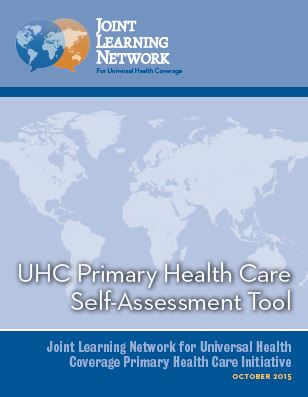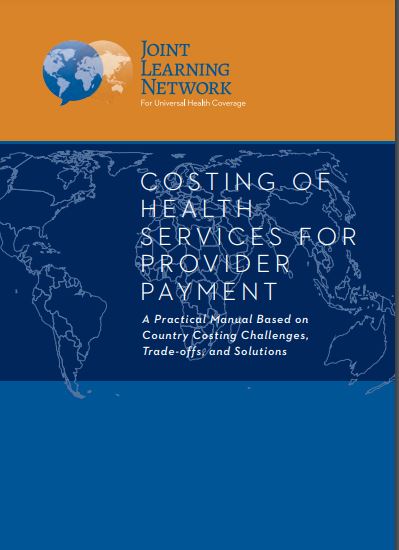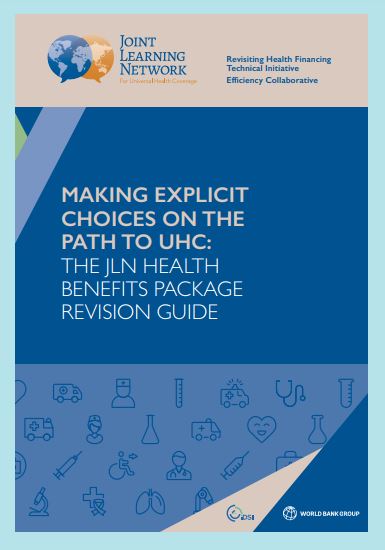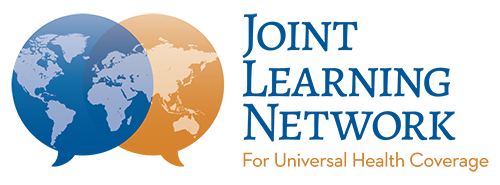Unlocking Insights: Exploring the Pinnacle of Knowledge – JLN’s Most Accessed Gems
James M Soki, Rahul S Reddy Kadarpeta, Vrishali Shekhar, Titus Kisangau
The Joint Learning Network for Universal Health Coverage (JLN) stands as a pioneering force, uniting practitioners and policymakers worldwide in a collaborative effort to transform health systems. Within the realms of this innovative, country-driven network, global knowledge products are meticulously co-developed, especially to cater to middle- and low-income countries. These products serve as a powerful bridge, seamlessly connecting theoretical frameworks to practical applications, with a shared vision of extending health coverage to over 3 billion individuals across the globe.
We have recently conducted an analysis of publicly available JLN’s knowledge products (KPs) to gain insights into the most frequently accessed resources. We delved into the content management system of the JLN website, aiming to pinpoint tools, toolkits, guides, manuals, and handbooks that not only align with UHC/PHC priorities but also have attracted significant interest from our website users. This analysis focused on website data available for the year 2023. We observed that 400 unique users accessed the KPs. Below, we present a list of our most (more than 75% of users) accessed and downloaded KPs. However, it’s important to note that this compilation is not exhaustive, and all the JLN ‘s KPs can be accessed here.
 UHC Primary Health Care Self-Assessment Tool: The JLN Primary Health Care (PHC) Initiative developed this tool to underscore the fundamental role of Primary Health Care (PHC) as the bedrock for implementing Universal Health Coverage (UHC) reforms in any given country. This tool serves as a valuable resource, offering countries the opportunity to conduct self-assessments of their progress towards achieving UHC and PHC goals. Featuring a comprehensive multi-stakeholder survey, the tool is designed to document and assess the intricate interactions between health insurance or financial coverage institutions and other essential PHC actors and programs. Its primary purpose is to assist countries in identifying key areas for improvement and to pinpoint opportunities for aligning health financing strategies with the PHC goals set by policymakers. Noteworthy is the successful pilot implementation of the tool in diverse settings, including India, Indonesia, Ghana, and Malaysia, which effectively demonstrated its functionality and applicability.
UHC Primary Health Care Self-Assessment Tool: The JLN Primary Health Care (PHC) Initiative developed this tool to underscore the fundamental role of Primary Health Care (PHC) as the bedrock for implementing Universal Health Coverage (UHC) reforms in any given country. This tool serves as a valuable resource, offering countries the opportunity to conduct self-assessments of their progress towards achieving UHC and PHC goals. Featuring a comprehensive multi-stakeholder survey, the tool is designed to document and assess the intricate interactions between health insurance or financial coverage institutions and other essential PHC actors and programs. Its primary purpose is to assist countries in identifying key areas for improvement and to pinpoint opportunities for aligning health financing strategies with the PHC goals set by policymakers. Noteworthy is the successful pilot implementation of the tool in diverse settings, including India, Indonesia, Ghana, and Malaysia, which effectively demonstrated its functionality and applicability.
 Costing of Health Services for Provider Payment: A Practical Manual: Developed by the JLN’s Costing Collaborative, this tool addresses common challenges associated with costing for provider payment. The essence of this resource lies in its ability to seamlessly bridge costing theory (defining what should be done) with practical, step-by-step guidance on actionable measures that can be taken to overcome various challenges related to costing for provider payment in low and middle-income countries (LMICs). The manual offers a wealth of adaptable tools and templates, drawing from the collective experiences of practitioners. Its practicality and effectiveness are evident, especially when applied in the context of countries designing new provider payment methods or to find tangible solutions to enhance the efficiency and effectiveness of provider payment systems.
Costing of Health Services for Provider Payment: A Practical Manual: Developed by the JLN’s Costing Collaborative, this tool addresses common challenges associated with costing for provider payment. The essence of this resource lies in its ability to seamlessly bridge costing theory (defining what should be done) with practical, step-by-step guidance on actionable measures that can be taken to overcome various challenges related to costing for provider payment in low and middle-income countries (LMICs). The manual offers a wealth of adaptable tools and templates, drawing from the collective experiences of practitioners. Its practicality and effectiveness are evident, especially when applied in the context of countries designing new provider payment methods or to find tangible solutions to enhance the efficiency and effectiveness of provider payment systems.
Assessing Health Provider Payment Systems: A Practical Guide for Countries Moving toward UHC, is another useful tool that offers a systematic and practical approach to countries that are choosing from an array of existing provider payment mechanisms. The tool provides a step-by-step methodology for designing and implementing effective provider payment systems, potentially minimizing unintended consequences resulting from transitioning between different payment approaches during countries UHC journey.
 Making Explicit Choices on the Path to UHC: Guide for Health Benefits Package Revision: As countries progress on their UHC journey, they make concerted efforts to revise their health benefits. This guide, developed by JLN’s Efficiency Collaborative, of the Health Financing Technical Initiative presents the experiences and expertise from 14 JLN member countries in revising the health benefits package, (Bangladesh, Ethiopia, Ghana, India, Indonesia, Kenya, Laos, Malaysia, Mongolia, Nigeria, the Philippines, South Africa, Sudan and Vietnam). This supports countries in responding to changing disease burdens, fluctuating budgets, and the emergence of new services and health technologies, and to correct implementation challenges whilst minimizing health-incurred financial hardships. It offers lessons from the countries that have attempted to overcome financial, human, and infrastructural challenges faced by them during the implementation of the revision of HBPs in their respective countries.
Making Explicit Choices on the Path to UHC: Guide for Health Benefits Package Revision: As countries progress on their UHC journey, they make concerted efforts to revise their health benefits. This guide, developed by JLN’s Efficiency Collaborative, of the Health Financing Technical Initiative presents the experiences and expertise from 14 JLN member countries in revising the health benefits package, (Bangladesh, Ethiopia, Ghana, India, Indonesia, Kenya, Laos, Malaysia, Mongolia, Nigeria, the Philippines, South Africa, Sudan and Vietnam). This supports countries in responding to changing disease burdens, fluctuating budgets, and the emergence of new services and health technologies, and to correct implementation challenges whilst minimizing health-incurred financial hardships. It offers lessons from the countries that have attempted to overcome financial, human, and infrastructural challenges faced by them during the implementation of the revision of HBPs in their respective countries.
Making the Case for Health: A Messaging Guide for Domestic Resource Mobilization: This guide was prepared by the Domestic Resource Mobilization Collaborative. The guide provides a set of 16 technical, political and economic compelling messages that can be used to make the case for investment in health amidst several other country priorities competing for limited financial resources available in the country coffers. Developed from the joint participation of health and finance policymakers, it distills and refines messages to bridge communication in the most effective way possible.
A Health Practitioner’s Handbook and Toolbox for Identifying the Poor and Vulnerable:: This guide was prepared by the Collaborative on Population Targeting. Drawing from the experiences of 11 countries, the handbook compiles a set of implementation tools on targeting mechanisms for countries aiming to expand coverage for their population. By highlighting the importance of institutional coordination and data linkages between health and non-health agencies, the tool attempts to guarantee the identification and targeting of the most deserving segment of the population, that is the vulnerable and poor.
To demonstrate our commitment towards meeting member country demands the JLN is launching the Knowledge Product Showcase Series. This effort is to amplify the reach and impact of Knowledge Products developed and elevate awareness surrounding JLN’s recently concluded and ongoing initiatives, opening avenues for greater exposure. This is an opportunity for key decision-makers and policy influencers to immerse themselves in the wealth of available products. By doing so, users can gain a profound understanding of the diverse approaches to develop and scale up sustainable innovations, crucial for advancing UHC priorities within their respective nations. Beyond the individual benefits, we aim to cultivate a dynamic ecosystem. The showcase provides a dedicated platform for JLN member countries to not only present their experiences, successes, and challenges in the adaptation and implementation of JLN Knowledge Products but also to engage in collaborative knowledge-sharing. This collective effort within the JLN community fosters a spirit of collaboration, contributing to the ongoing evolution and improvement of healthcare systems globally.
Authors: Rahul is the Executive Director, James is the Programme Manager and Titus is the Communications Lead, the Joint Learning Network for UHC (JLN). Vrishali is a Joint Learning Network Health Specialist at the World Bank. Authors acknowledge input from Somil Nagpal, Lead Health Specialist, the World Bank and the JLN Network Management team.
